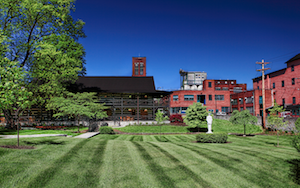................................................................
JULIAN VAN WINKLE SITS AT HIS DESK IN THE SUBURBS OF LOUISVILLE, KENTUCKY, STARES OUT OF HIS OFFICE WINDOW, AND ALL BUT WINCES. I have only asked one question, one which I thought was a pretty straightforward one – about the healthy state of the American whiskey industry in general and his Van Winkle range in particular. “The thing is,” he says after some thought, “we haven’t got enough whiskey. There isn’t enough to go round. We only advertise to support the whisky magazines but rurally it’s a pain in the butt. All advertising does is create more demand for whiskey we still haven’t got.
“I spend most of the time taking calls from people complaining that x has five bottles and y has 10, and they only have three. Or I’m saying no to retailers wanting to buy more stock. I spend most of my day disappointing people.”
The year is 2005 and the worldwide whisky tsunami has yet to happen. In America bourbon has only just started climbing the shelves from its lowly status as a blue-collar spirit, nobody under 30 drinks it, there is no cocktail culture, and very few super-premium American whiskeys such as the ones Van Winkle and his newly recruited son Preston are peddling. There is no cult of rye whiskey yet, and only a handful of craft distillers.
But, most of all, few others are experiencing the Van Winkle dilemma and no-one is predicting that they will do so any time soon. Nobody knows it yet, but Julian Van Winkle’s allocation issue is a whisky trickle that will become a flood in under a decade.
Fast forward to 2015, and while the world of whisky has been turned on its head in general, the makeover in America has been greater than anywhere else. Everything has changed – the variety of whiskeys, the number of distillers, experimental whiskeys, the reputation of bourbon and the demographics of the average drinker have turned the American whiskey world on its head. Most of it has been good but not all, and there have been growing pains along the way.
Frank Coleman, senior vice chairman of the Distilled Spirits Council of the United States, was one of the first to recognise the changes and was instrumental in DISCUS acknowledging the new distillers.
“We set up a division of DISCUS to allow craft distillers to become affiliates,” he says. “At that time there were 60, maybe 70, craft distillers. Back in 2001 there were no more than a dozen. Now the latest figures show there are 700 distillers making 100,000 gallons of spirit or less.”
At the same time, the big Kentucky producers have spent the past decade expanding, putting in new stills and building new warehouses. Unsurprising, then, that the volume of American whiskey sales has boomed. Figures from the Kentucky Cabinet Economic Office of Research and Public Affairs show that exports of Kentucky whiskey rose 99% over the four-year period from 2009 to 2013. According to 2014 US spirits market volumes released by DISCUS last month, bourbon and Tennessee whiskey accounted for 19.4m of the 210.2m total cases in the American spirits market.




